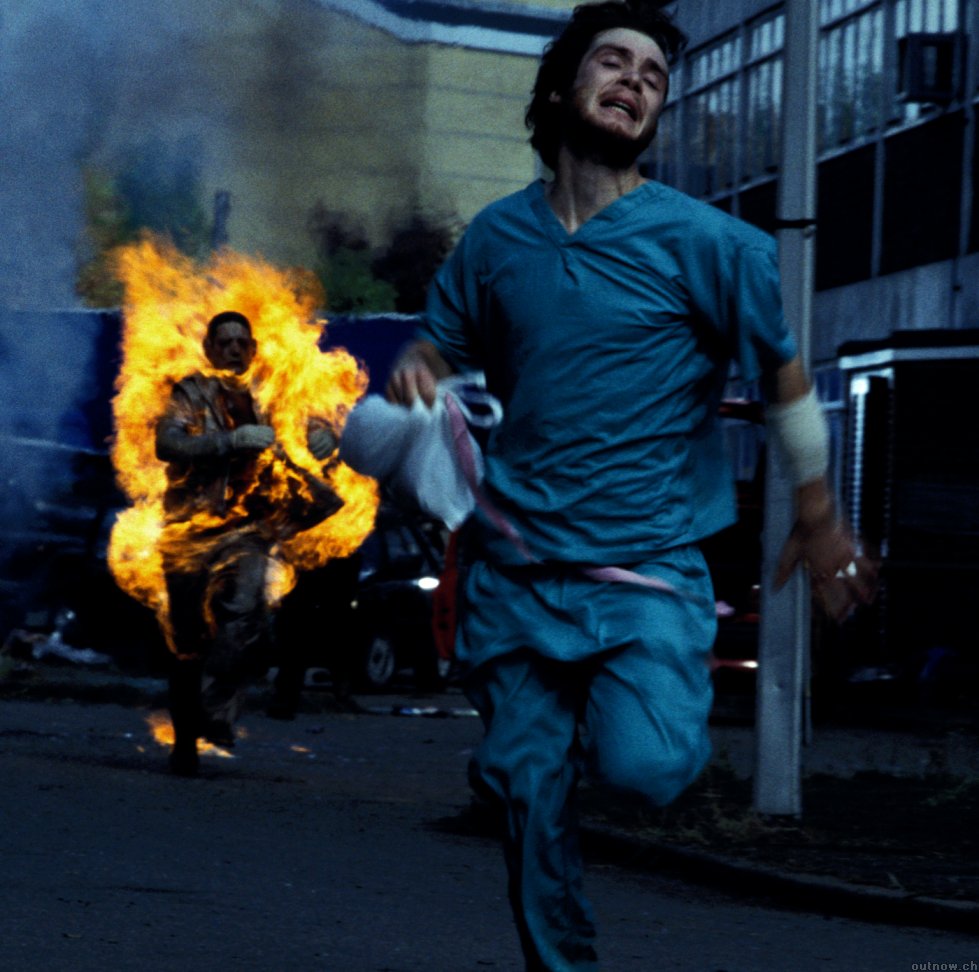

|
28 Days Later
7 out of 10 |
 |
|
"The end is extremely f**king nigh" In the tradition of zombie films such as George A. Romero's 1968 classic "Night of the Living Dead," "28 Days Later," written by "The Beach"'s Alex Garland and "Transpotting"'s Danny Boyle, is a creepy, chilling and surprisingly moving thriller. Starring Irish newcomer Cillian Murphy, in his first major role before appearing in Peter Webber's "Girl With A Pearl Earring," Brendan Gleeson, Christopher Eccleston ("Shallow Grave"), Naomie Harris and Megan Burns, it contains some truely frightening scenes that will have you on the edge of your seat but also, like "Night of the Living Dead" and sci-fi thrillers "Planet of the Apes" and "1984," it will leave you eerily haunted. Set in London and Manchester (Britain's second largest city), Jim (Murphy) a young bicycle courier wakes up following a coma in a deserted trauma ward. Wandering out into the streets of London, he is confronted by a wasteland as the city and the countryside have become infected by a virus called "The Rage," which when infected has turned ordinary Britons into a mass of writhing, bloodthirsty undead. In a chance meeting after awakening, Jim finds a handful of other survivors like himself on the run from the victims of the illness - a father and daughter Frank (Gleeson) and Hannah (Burns) and Selena (Harris) and hearing a radio broadcast, the four decide to head north, which they hope will lead them to safety. As with most pictures by Danny Boyle, such as "Shallow Grave" and the infamous "Trainspotting," the landscape is harsh and gritty and the relationships between the characters are central, giving the picture a strongly humanistic edge and memorable cultural references. For a horror film, "28 Days Later" is surprisingly effective and contains elements that are frightening, disturbing and deeply affecting. Following increasing violence and risks of an outbreak of pandemic proportions, it explores the possible responses and effects, with twists that could only be dreamt up by Boyle and contains social messages about the loss of community, increasing alienation and violence in the civilized world. Danny Boyle, who has written lighter material for television ("Inspector Morse," "Hamish Macbeth"), often likes to create movies that allow the viewer to see life in a more positive way. While focusing on the topic of a devastating plague may make this seem like an impossible feat, he does manage to accomplish his task and to also make some powerful statements. All the while his and Garland's fearless style of filmmaking and love of experimentation show though. This can be seen particlarly well in the newly released DVD version, which includes deleted scenes, director commentary, storybards, and clever alternative endings, displaying his and Garland's talented storytelling at work. Shot completely in digital which creates a very experimental feel and a sense that you are present and part of the action, with it's stark realistic images, unique costume design by Rachel Fleming ("A Life Less Ordinary," "Twin Town") and terrifying make-up - the deserted streets, burning cities and harrowing escape scenes, backed by a soundtrack written by Boyle and various artists - have resulted in an unforgettable two hours. Giving a captivating performance in one of his first major film roles, Murphy is superb, as are Gleeson and Harris. Impressively written and well directed, Boyle has managed to make the message of a lost civilization attempting to come to terms with the horrifying vision of the future both entertaining and inspiring and will also likely leave members of the audience gripping the edges of their seats long after returning home. Fearless Style Of Filmmaking
Film Critic: Jennifer M Lillies
|
|